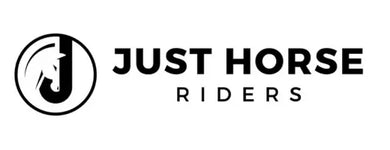Creative Alternatives for Feeding Hay in the Field Without Breaking the Bank
Feeding horses or livestock without denting your wallet can be a real challenge, especially during times of drought or when hay prices are soaring. Luckily, there are several creative and budget-friendly alternatives to traditional hay that promise not just cost savings but also the nourishment your animals cherish. This blog offers a deep dive into these innovative options.
Optimizing Pasture Management

Before delving into feed alternatives, it's crucial to understand that good pasture management can significantly cut down hay expenses. By renovating and rotating pastures, costs can be reduced considerably. Rutgers University demonstrated this by saving up to $4,000 in a single summer through effective pasture management. Splitting pastures into sections and implementing a rotational grazing system using electric tape fencing ensures the grass gets ample time to recover, reducing your supplemental hay needs.
Quality Forage Over Grain
Investing in high-quality forage rather than grain can be a game-changer. Expert Amy Gill, PhD, recommends calorie-rich hay for performance horses. Easy keepers, on the other hand, thrive on slightly overmature timothy hay, a less expensive choice. When shopping for hay, prioritize the weight and nutrient content over the price tag. A pricier bale with better nutrients and weight may prove economical in the long run.
Exploring Forage Alternatives
Beet Pulp

Low in sugar but rich in protein, beet pulp is an excellent alternative to hay. Offering a healthy mix of phosphorus and calcium, it ensures nutrition without overwhelming your budget.
Cottonseed
Cottonseed is fiber-rich and boasts highly digestible content. However, the oils it contains can alter butterfat levels, necessitating a well-thought-out ration balance.
Almond Hulls
In areas like California, almond hulls make a perfect forage alternative. They provide high NDF digestibility and natural oils similar in nutrition to alfalfa.
Citrus Pulp
Derived from processing citrus fruits, citrus pulp is both calorically and nutritionally dense. It showcases antibacterial and antifungal properties, making it a top-tier forage option.
Mill Run (Bran)
With high fiber digestibility, mill run or bran offers a modest starch content. It pairs well with other high-fiber feeds to enhance dietary variety.
Grain Hays/Silage
Grain hays, such as wheat, barley, or triticale, give alfalfa a run for its money. When cut early, they maintain high digestibility, which is key for replacing regular hay.
Wheat and Barley Straw
While wheat straw boasts low fiber digestibility on its own, blending it with feeds like beet pulp can bolster your forage supply in a cost-effective manner.
Waste Reduction Techniques
Using Hay Rings

A University of Missouri study found that using hay rings when feeding large round bales can reduce waste dramatically—from 45% to 9%. This simple strategy can save more dollars than you might think.
Slow Feeders
Introducing slow feeders minimizes hay waste while promoting healthier eating habits. Choose safe designs, like hay nets with small openings, to care for your horse's teeth and gums. These feeders can ensure a slow and safe feeding experience.
Utilizing Local Resources
Clearing Overgrown Property
Pigs can be enlisted for clearing overgrown property effectively, consuming a wide variety of vegetation. This can open up garden spaces and simultaneously reduce reliance on purchased feed.
Growing Your Own Feed

Consider growing crops like alfalfa, comfrey, or sweet potato vines if conditions allow. With minimal water and care needs, they can be harvested and stored for future use, decreasing dependency on store-bought hay.
Conclusion
Managing livestock feed economically requires blending effective pasture management with creative forage alternatives. By reducing waste, leveraging local resources, and making wise forage choices, you can substantially trim your feeding expenses without compromising your livestock’s nutritional needs. Remember, even modest changes can collectively yield significant savings and contribute to a sustainable future.

